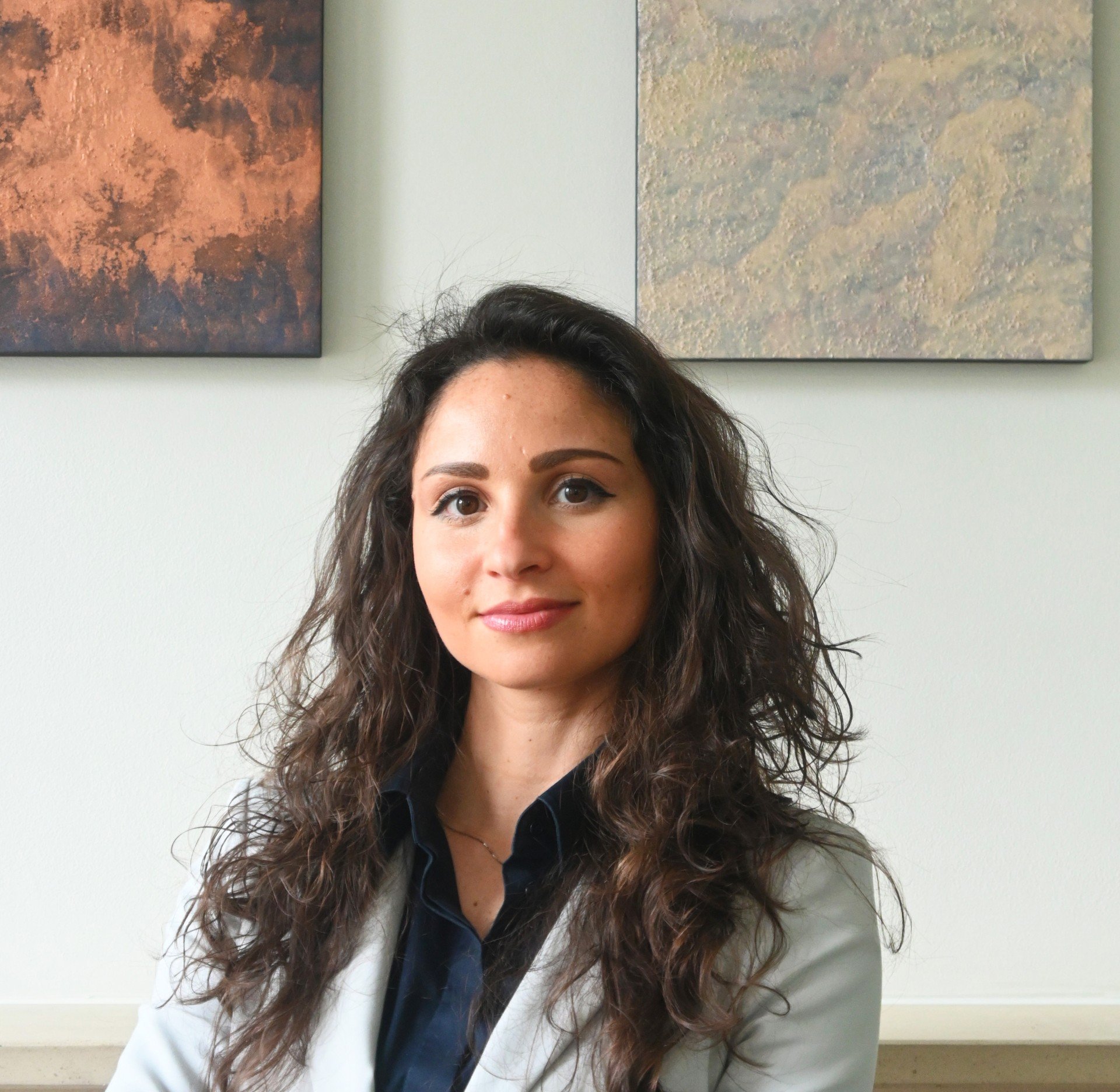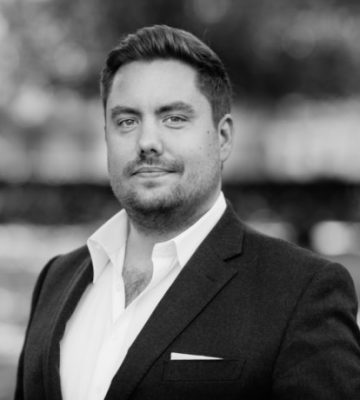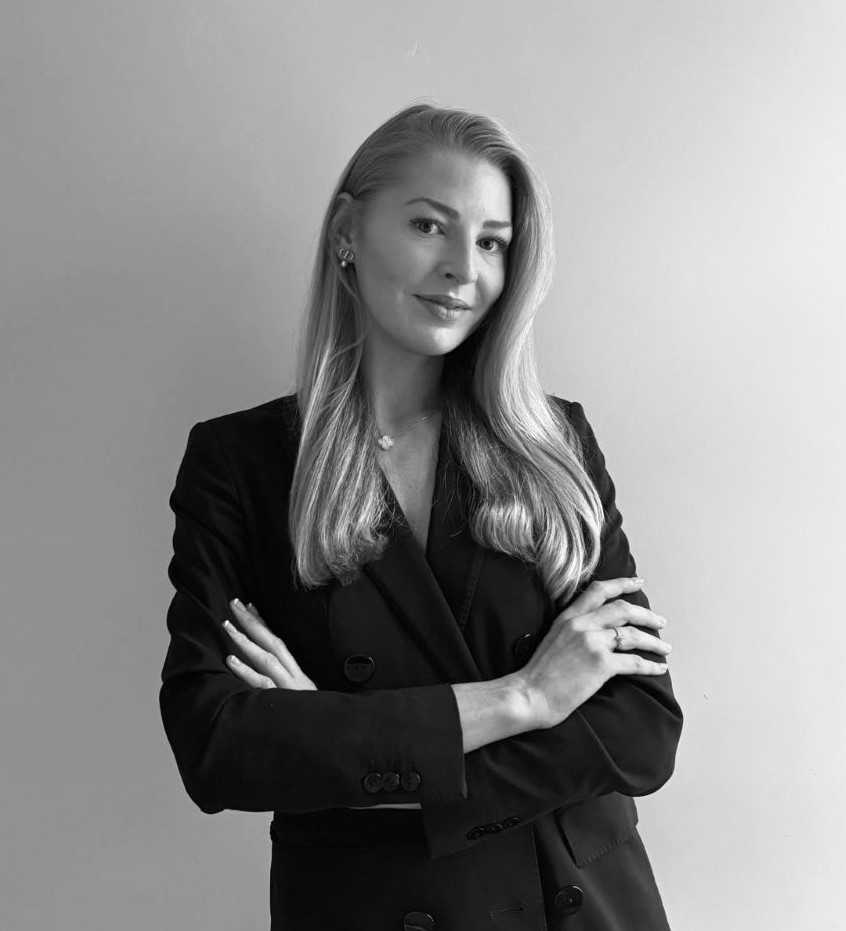As someone who has devoted their professional career to the art world and art collecting, can you share what deep down has driven you in this direction?
My passion for art, and particularly the art market, became evident when I had to select a university and consider my future career. Being Italian, I was fortunate to be surrounded by beauty my whole life. I have always been fascinated by the frescoes of the old masters, as well as the vibrant contemporary art scene.
Consequently, I chose the only faculty at the time that allowed me to study the art business in depth, rather than just art history. I then decided to turn my passion into a career when I attended an auction at Sotheby's in Milan. The excitement of escalating bids, the tension of the public, and the chance to see the mysterious dynamics of the art market impressed me to such an extent that I not only wanted to be part of this world but also to modestly try to modernise it. I was doing an internship at a hedge fund in London for my Master's thesis when I learned of the existence of art exchanges in China. This occurred in 2015.
I considered this an excellent opportunity to develop a similar model for the European market. By combining art and finance, I aimed to create a platform that could make art investment more affordable, accessible, and transparent through the fractional ownership model. This led to the establishment of London Trade Art.
The art collecting journey followed naturally, with the opportunity to meet incredible artists and be exposed to market trends. Once again, a personal passion became one of the key services offered by London Trade Art, which provides art advice to both private and corporate clients.
On this journey, including the founding of your company, what would you say has been the most significant moment or milestone that has shaped the person you are today?
As is often the case, I believe that it is the failures that have shaped me into the person and professional I am today, more than the successes. When I commenced my entrepreneurial journey, I was not fully aware of what it would hold for me. There were many challenges and struggles along the way, especially in the beginning, when I only had a vision, a utopian idea, and no connections in the field. I recall attending numerous art fairs and presenting my project to potential investors one by one. The response I received was not what I had anticipated. The art market is not renowned for its enthusiasm for disruptive projects.
However, the criticism and reluctance I encountered provided me with the opportunity to re-examine my business model and refine it further. This process of iteration and improvement enabled me to adapt my model to align with the evolving needs and expectations of the market.
However, in terms of successes, a significant milestone was the launch of the inaugural fractional ownership project in 2020, which saw the sale of an artwork split into several art shares in less than 24 hours, as well as a blue-chip work by the renowned artist Alighiero Boetti in a few weeks. This not only demonstrated that my resilience and patience were well-founded and that the public was finally ready to accept such a revolutionary model of art collecting, but it also gave me the personal and professional confidence that I previously lacked.
Every year it seems the pace of change gets ever faster. Against this backdrop how do you ensure you stay adaptable and open to new opportunities?
For an early-stage company such as London Trade Art, the ability to pivot is crucial. Over the past few years, we have had to contend with numerous changes that have transformed the art market, ultimately necessitating a process of digitalisation.
Of course, the global pandemic played a significant role in compelling the traditionally conservative art sector to identify and implement alternative digital buying models. This process has undoubtedly benefited us, as we have been attempting to introduce digital solutions since 2016 in a market that was highly reluctant at the time. We were aware of the sector's lack of preparedness when we launched LTArt, and that's why we commenced as an online art gallery and art consultancy, addressing the needs of a new generation of art collectors, as well as companies seeking to enhance their corporate social responsibility through art collecting and art projects.
However, the concept of an art exchange was evident from the outset. It was simply a matter of waiting for the opportune moment and, in the meantime, educating the market and our clients about something more innovative. In this respect, the period of the global pandemic proved conducive to the growth and the expansion of a digital art market, while generating considerable enthusiasm within the sector. It was the optimal time for us to finally launch our inaugural art fractional ownership projects. Nevertheless, as is often the case with the emergence of new markets, we also had to contend with the hype surrounding volatile trends, such as NFTs, at a time when everything seemed possible.
We rapidly grasped the advantages of NFTs, particularly when employed as smart contracts, which can enhance the transparency, authenticity, and traceability of the linked item. We believed it would be an optimal fit for our art shares, but we underestimated the extent of confusion it caused, with individuals confusing the Art Shares, or smart contracts linked to physical works of art, with digital art. Consequently, we were compelled to redesign our services and make them more comprehensible. Even now, the company is currently undergoing a rebranding process and developing a brand-new website to meet the expectations of a more secure and sophisticated website, in line with the latest digital paradigms. The new design will be revealed soon, as will the art exchange, finally fulfilling the original vision of the company.
Founding, leading, and growing a new business often involves taking risks. But what role do you believe risk-taking plays in achieving goals?
In my experience, taking risks is essential to achieving goals. Initiating a disruptive business in an established and conservative market was a significant risk. To respect the traditional methods and dynamics of the art market, we introduced our model very gradually to establish ourselves as a trustworthy company before launching the art exchange. Nevertheless, every decision we made involved risks: reputational, managerial, and financial risks. Naturally, we are proud of our team of art and finance experts, who are dedicated to thorough research, analysis, and due diligence.
However, despite these efforts, there are instances when the desired economic and product returns cannot be guaranteed, as unforeseen circumstances can lead to significant risks of failure. Entrepreneurship demands courage and a willingness to take risks, but I believe that those who persevere will be richly rewarded.
What is your philosophy when it comes to pursuing your ambitions, and how do you use this to inspire and motivate those around you?
When I envisage an objective, I impose two key values upon myself: patience and determination. I have learned by experience that an impulsive ambition cannot always guarantee the achievement of long-term goals. I had to learn on the field to be very patient. It is akin to the care of a baby. It is not possible to bypass stages of development; rather, it is necessary to listen to those in front of you, to understand the market and the needs of your clients.
I have observed the rise and fall of many start-ups during recent years, and I believe that one of the reasons for the failure of some of these projects was the ambition to skyrocket too quickly. I adopt a more conservative and gradual growth strategy, which adapts to market conditions. This is the approach I recommend to my team as well: to consider the broader picture rather than immediate returns.
Overcoming challenges and displaying resilience are increasingly important. Can you share any setbacks you’ve encountered, and how you’ve used that experience to learn and grow?
London Trade Art was established in 2016. During this period, numerous challenges have been encountered. A few years ago, for instance, we experienced a serious technical problem that took several weeks to resolve. This is a major setback for any online business. On another occasion, a misunderstanding about the nature of the business model forced us to redefine the purpose of an art project we were working on. Consequently, the project was reoriented to ensure its continued viability and to defend the company's reputation. The introduction of novel concepts can be intimidating, and from our perspective, there may have been communication deficiencies.
However, these experiences have imparted valuable lessons, as they have compelled us to exercise greater caution and attention when communicating the brand, as well as the creation of additional exit strategies for our customers. Throughout these years, flexibility and determination have been essential. While we are constantly striving to improve our service, we try to use the struggles we have faced as motivation for further growth and development. If the passion and drive to succeed remain, the company is prepared to face new challenges.
Uncovering, supporting, and backing ideas can often make a difference. What do you believe is important when seeking to foster a culture of innovation and creativity?
Innovation is a very valuable topic these days, but it's important to remember that it brings disruption, sometimes even revolution, which can be scary at first. This is the paradox of the art market: it is based on creativity, but less on innovation. To promote a more progressive market, it's equally important to push new technologies and modern methodologies, while at the same time being very respectful of traditional players and dynamics, which throughout history have not always proved adaptable to digital or innovative models.
However, I'm happy to see that things are already changing, mainly due to the post-pandemic situation, which has encouraged the start of a necessary digitalisation process. In this new scenario, innovation and creativity are at the heart of society, as one supports and enhances the other. It's exciting to see that it's an ongoing process and that there's still so much that can be done to improve and expand the market through innovative solutions now that it's finally opening.
Successful people often face challenges in balancing work, commitments, and personal life. How do you manage this balance, and what strategies do you use to prevent burnout?
I feel a responsibility to protect my work-life balance and my mental health, which I believe is essential to maintaining a healthy family life. London Trade Art was my first real professional venture. However, my priorities were significantly redefined when I became a mother for the first time during the lockdown. This period forced me to redefine my priorities and become more present and flexible with my son while continuing to run my business.
My second child is three months old at the time of writing and I feel more prepared to juggle motherhood and work now. What helps is my husband's support. We have promised to try and leave our business problems at the door when we get home, at least while the children are there so that we can spend some quality time together. Nevertheless, it is not uncommon to feel overwhelmed. When this happens, it is wise to take a step back and devote time to your well-being to replenish the resources needed to care for your family and your business.
Many dream of founding their own business, especially in an area they are passionate about, what advice would you offer those thinking of following in your footsteps?
Sometimes I think about whether I would do the same thing again. The answer is usually yes. However, I acknowledge that this is not a path for everyone. Passion is undoubtedly an important motivating factor, but when you turn your passion into a profession, there is a risk that the passion will fade because of the daily challenges and obstacles. Personally, when I feel overwhelmed, I try to visit a museum or an interesting exhibition, which usually rekindles the spark that led me to start my business. Furthermore, there are many advantages and disadvantages to being your own boss. In addition, the entrepreneur is responsible not only for himself or herself but also for his or her entire team, which is often the most asset an individual can possess.
A trustworthy and close-knit team is undoubtedly the foundation of success, just as a divided team can cause a business to fail. My husband often says: "If it were easy, everyone would do it". I believe that although it is challenging, it can potentially provide a greater sense of achievement in the long run.
For many beginning an art collection and knowing where to start can feel daunting, what would recommend to them to help them get started?
It is acknowledged that the process of initiating an art collection can be intimidating, particularly given the elitist and exclusive nature of the art market. The most frequently asked question is "Where do I start? The answer lies in understanding your personal preferences and developing an eye for art. Visiting exhibitions, galleries, and fairs is an effective way to familiarise yourself with the art world and cultivate your taste. With regular exposure to art, the eye is trained, and a unique and personal taste develops.
Secondly, when evaluating an art purchase, it is important to consider the artist's position in the market and the characteristics that define a piece's value. One of the most challenging aspects of collecting art is determining the appropriate price to pay for a work of art. We have also written the "ABCs of Art Evaluation", an e-book designed to help art enthusiasts understand art evaluation before embarking on an art collection. I always recommend that prospective art buyers first assess their affinity with the work in question. Put simply, you must like what you buy. At the end of the day, even in the event of a negative investment outcome, the artwork will still serve as a source of aesthetic pleasure.
Finally, London is renowned internationally as an art mecca, but as someone working within that world what would be your top London art highlight?
When I moved to London, I was drawn to the city's diverse and vibrant cultural landscape, which includes a range of cutting-edge contemporary art galleries as well as renowned, established museums. My favourite places are the Barbican, Pace Gallery, and always the Royal Academy of Art, while I highly recommend the café at the V&A because, after a museum visit, a visitor needs a nice place to rest and recover. Another experience that not everyone knows about is the opportunity to attend auctions. It's always worth visiting the collections and exhibitions of the major auction houses, such as Christie's and Sotheby's, and witnessing their exciting auctions. In addition to the biggest art fair of all, Frieze, many smaller fairs are very interesting, such as PAD, which is dedicated to art and design, The Other Art Fair, which is dedicated to emerging artistic talent, and Masterpiece, which uses to exhibit the best of the most established art.
Unfortunately, this niche fair had to close its doors a few years ago due to a lack of international players willing to exhibit there. Indeed, the London art scene has undergone significant changes in the wake of the UK's departure from the European Union. Not only has the UK lost its second place in global sales, dropping to third place behind China with 17% of global sales, but a significant number of European art galleries have moved out of London to establish themselves elsewhere. A few years ago, for example, there were many Italian galleries in the Mayfair area, but now there are only a few left, such as Mazzoleni and Massimo De Carlo. I hope that the UK will be able to attract new art players over the next few years, encouraging a more open and international market.
The views and opinions expressed in this piece are those of the author:
- and do not consituite advise or a recommendation
- and do not necesserilay reflect the official policy or position of Enness
- and are not intended to indicate any market or industry viewpoints, or those of other industry professionals





